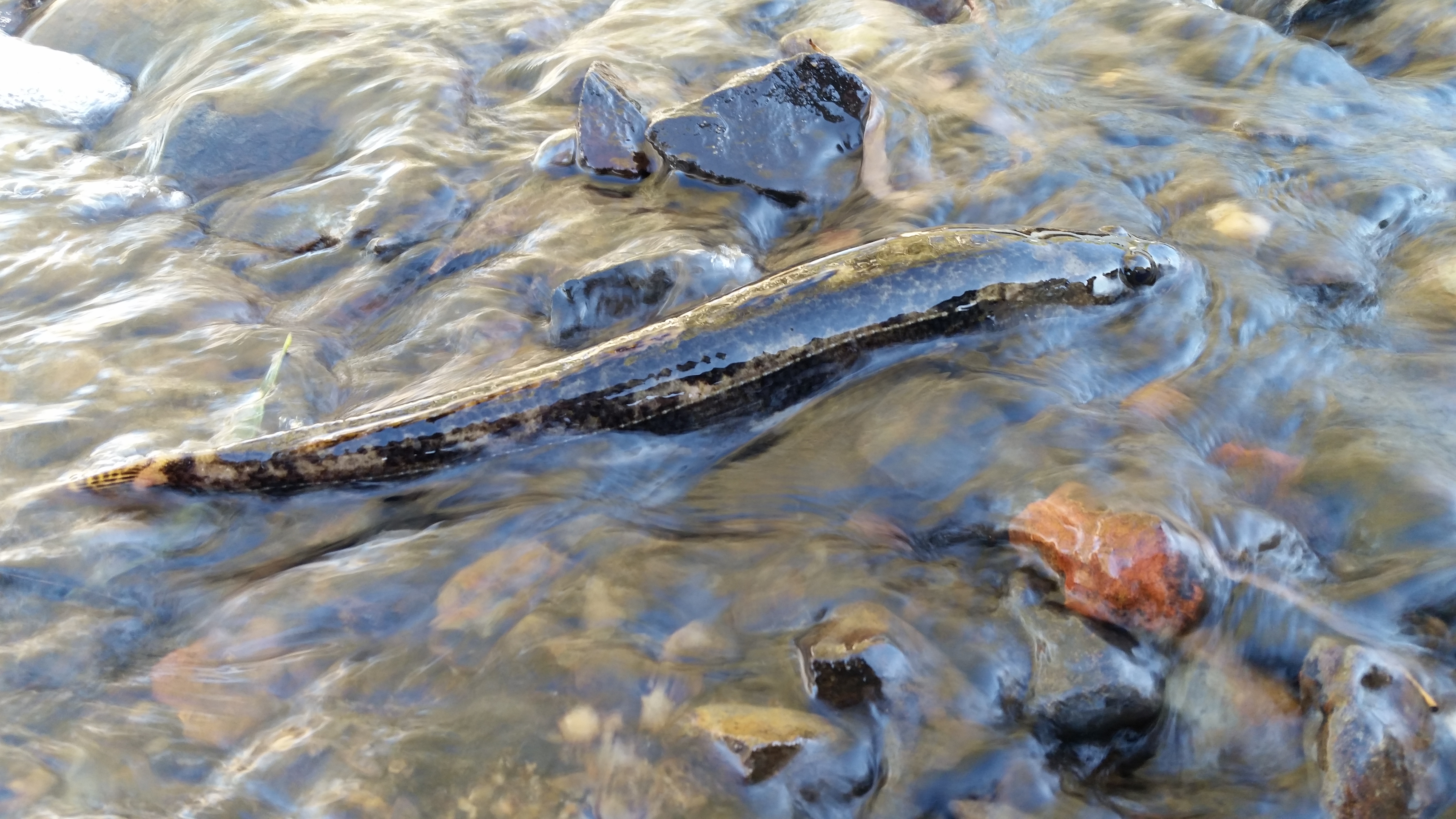Tupong (Pseudaphritis urvillii) belong to an unusual group of fish, called diadromous fish, that spend part of their lives in freshwater, and part in saltwater.
Although common to coastal Victoria, for many years tupong were not found in the mid and upper reaches of the Glenelg River (Bochara-Bogara-Pawur). Fortunately, waterway restoration efforts focusing on improving connectivity, including deliveries of water for the environment and the removal of barriers to fish movement, has seen them return in increasing numbers.
In autumn 2023, significant numbers of young-of-year tupong were recorded during monitoring by the ARI. The monitoring supports our understanding of how water for the environment works alongside habitat restoration to help improve fish populations in the Glenelg River.
The results followed wet conditions in 2022 which contributed to the creation of excellent conditions for these native fish to migrate and breed.
Not just adding water
River flows are important to the life cycles of diadromous fish, with increases in river flow triggering migration from the ocean, upstream to freshwater, and then back to the ocean.
Young tupong migrate into freshwater from the ocean in response to spring and summer high flows, while adult tupong head back downstream to the sea in autumn and winter to breed.
The return of tupong in the Glenelg River started in 2013, when environmental flows were first released in an attempt to trigger fish breeding. This resulted in many tupong heading upstream from the sea – where unfortunately they were stopped by the Sandford Weir.
In response the Glenelg Hopkins CMA built a fishway later that year allowing the tupong to take full advantage of the chance to migrate further. Since then, the fish have been found some 330km upstream of the estuary.
“Working at a landscape-scale informs how we can remove barriers to fish movement, restore habitat and introduce environmental flows to support migration and provide connectivity in the river – and for the tupong, to the ocean,” Glenelg Hopkins CMA Water Resources Coordinator, Alex Lewis said.
Responding to seasonal conditions
Between July and December 2022, natural flows provided by wet conditions meant that supplementary water for the environment was not needed to trigger migration and spawning of tupong. Overbank flows during this time also connected the Glenelg River to its floodplain in places. This natural event brought a pulse of carbon into the river.
While large, sudden, influxes of carbon into rivers can cause ‘hypoxic blackwater’ events where dissolved oxygen levels become too low for fish and crayfish, the majority do not. These pulses of carbon are a vital ecosystem process which provide food for the invertebrates that many fish rely on, including tupong.
Water for the environment was delivered from December 2022 to mid-April 2023 to support low flows and a fresh was delivered in late February. These deliveries of water for the environment were aimed to support native fish including providing a cue for the upstream migration of tupong to complete their lifecycles.
Average and wet conditions are most likely to see water for the environment used for fresh events (i.e. a high pulse of water), boosting natural flows and in turn helping re-establish small-bodied native fish populations, such as tupong, through providing migration and breeding triggers.
The use of held environmental water in autumn and winter 2023 demonstrates how water for the environment can be used even after wet conditions, to achieve environmental outcomes – in this instance helping the tupong migrate from and to the ocean.

Image: Tupong in Glenelg River, by Arthur Rylah Institute
Managing to changing conditions
Management of water for the environment in the Glenelg River has adapted over the years as we learn more about how to best use the water we have available in a changed system.
There are stories that refer to the Glenelg as a 'chain of ponds' and of the river retreating to pools in the height of summer. However, due to both river regulation and land-use change, many pools are now filled up with sand. Now if the river stopped flowing, there is not the same number of refuge pools available, increasing the risk of large fish death events.
Also, if the Glenelg stops flowing completely it can take a large volume of water to get it moving again. As these events typically only occur when there isn’t much water to work with, waterway managers try hard to avoid letting that happen.
Glenelg Hopkins CMA’s Alex Lewis explains: “Even though we can and sometimes do trigger the migration of tupong, we don’t always. Over the last few years, we’ve shifted our thinking more towards maintaining connectivity to support migration when it happens naturally.
“In 2022-23 we adapted our management of water held for the environment to consolidate the gains from the 2022 natural flood event.
“That’s led to a great outcome for tupong in 2022-23. They’re a really interesting fish, and it’s great to hear stories of tupong coming back to sections of the river they had been lost from.
“We hear stories from community members of fish showing up that they hadn’t seen since they were kids.”
Alex said the tupong were also a great indicator species. Where they are present upstream, it demonstrates that the river is connected.
“They will instinctively move as far upstream as they can in pursuit of food and habitat. If tupong can move freely through the river then other species can too. This benefits all species in the river, including key recreational fishing species such as estuary perch.”